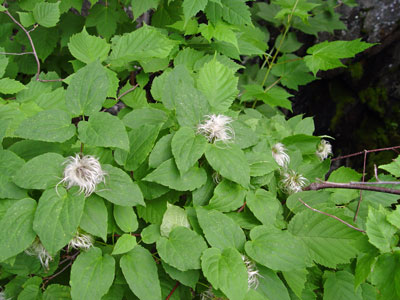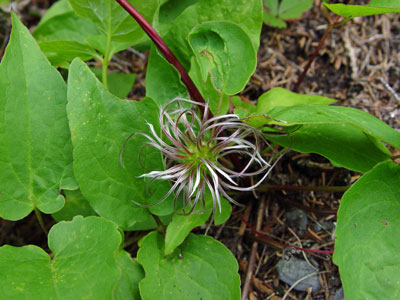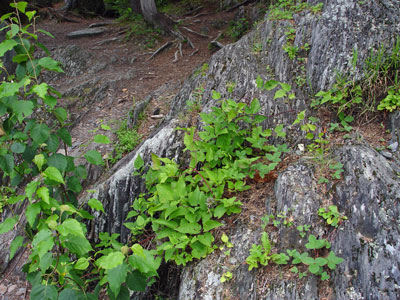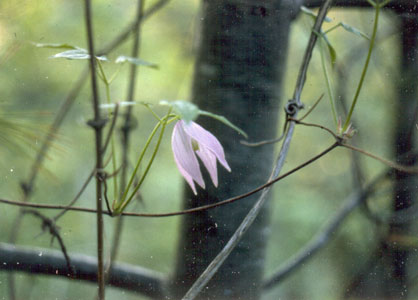DACF Home → Bureaus & Programs → Maine Natural Areas Program → Communities, Plants, and Animals → Rare Plants → Clematis occidentalis

Clematis occidentalis (Hornem.) DC. ssp. occidentalis
Purple Clematis
- State Rank: S3
- Global Rank: G5T5
- State Status: Special Concern
Habitat: Rocky (often calcareous slopes) and open woods. [Rocky summits and outcrops (non-forested, upland); Non-tidal rivershore (non-forested, seasonally wet); Hardwood to mixed forest (forest, upland)]
Range: Canada to Virginia and west to Iowa.
Aids to Identification: Purple clematis is a climbing vine closely related to the garden variety of clematis, or virgin's bower. Its light green leaves are divided into 3 oval leaflets, on long stalks which often climb and twine to a height of 3 m. The flowers, arising from the leaf axils, are bluish-purple, 5-8 cm across, with 4 thin, almost translucent, sepals (often called petals). The flowers are followed by tufts of silvery, feathery fruits.

Ecological characteristics: Ecological relationships in Maine are not well known.
Phenology: Flowers in May.
Family: Ranunculaceae
Synonyms: Represented in Maine and New England by ssp. occidentalis. Synonyms include Atragene americana Sims; Atragene occidentalis Hornem.; Clematis verticillaris DC.; Clematis verticillaris var. grandiflora Boivin. Formerly tracked as Clematis occidentalis (Hornem.) DC. var. occidentalis as per Kartez (1994).
Known Distribution in Maine: This rare plant has been documented from a total of 35 town(s) in the following county(ies): Androscoggin, Aroostook, Cumberland, Franklin, Kennebec, Knox, Oxford, Penobscot, Piscataquis, Somerset.
Reason(s) for rarity: Natural scarcity of suitable (i.e. calcareous) habitat. Scarce throughout its range.
Conservation considerations: Typically occurs in small populations that can be subject to random fluctuations or localized disturbance events. Known populations are all either at forest edges or in the open, indicating that the plant does not do well under heavy forest cover.

